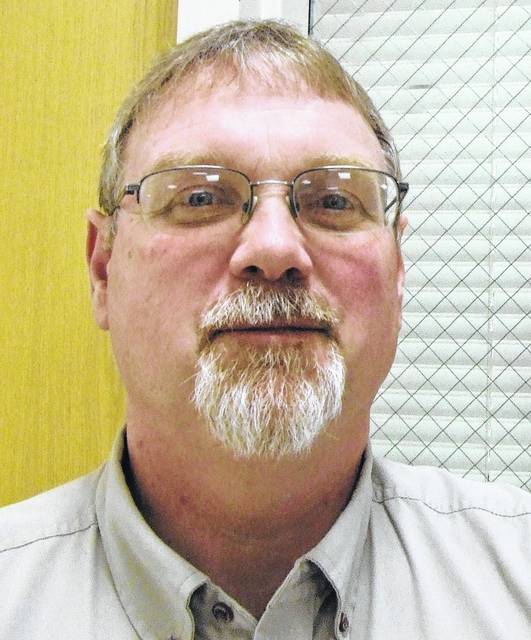
I start this week’s column by first hoping you are all staying safe and healthy during this challenging time. Here at the Nye household, we are all surviving, but it does not come without its ups and downs at times.
As we head into another week of teleworking and zooming from home I recommend we all take a deep breath, say a prayer and look for a silver lining in all this.
Currently, my silver lining is that I have the farm and the livestock to keep me busy and break up the time I spend looking at a computer here in my makeshift office.
I am sure that many of you with farming operations have plenty to do as we get closer and closer to the 2020 planting season. The sight of a tractor or some other sort of farming equipment heading down our road brings a smile to my face and keeps me excited about this year’s growing season.
The mild winter we have had, may or may not get us an early start planting. But if you haven’t been out walking around, there are sure plenty of plants coming to life very quickly. Our peaches bloomed this week, trees are starting to leaf out, and daffodils are blooming and oh yea, several of our pestering weeds are just thriving.
In conversations this week amongst us agricultural educators, the one weed we can all agree is ahead of schedule and doing very well is poison hemlock.
According to OSU Extension specialists, Mark Loux and Curtis Young, poison hemlock remains one of the more persistent and prevalent poisonous weeds that we deal with in Ohio.
It’s most typically a biennial plant (sometimes perennial), emerging from seed in year one and developing into a low-growing rosette by late fall. The rosette overwinters and then resumes growth in the spring of year two.
Stem elongation initiates sooner in spring than many other biennials, and this is followed by continued growth and development into the often very tall plant with substantial overall size.
Flowering and seed production occur in summer.
Failure to control poison hemlock occurs partly because, while it often grows in edges and fencerows around crop fields, no one really pays much attention to it until it does reach this large size when it’s less susceptible to herbicides. And everyone is busy getting crops planted in spring anyway so control of hemlock gets low priority.
Stages in the poison hemlock life cycle when it is most susceptible to control with herbicides are: 1) fall, when in the low-growing rosette stage; and 2) early spring before stem elongation occurs. It is most easily controlled in fall, but several products can work well in spring. Herbicide effectiveness ratings for poison hemlock can be found in Table 21 of the current Weed Control Guide for Ohio, Indiana, and Illinois.
Herbicides rated 8 or 9 on poison hemlock include the following: 9 – Crossbow, Remedy Ultra; 8 – Cimarron Max, Curtail, dicamba, glyphosate. Mixing glyphosate and dicamba can improve control compared with either applied alone.
For more information on controlling poison hemlock or if you have more questions regarding the up and coming growing season, might I invite you to our virtual Southwest Ohio Coffee Talk Zoom.
Beginning next Thursday, April 9 at 7:30 a.m. the County Extension offices of Clinton, Greene and Fayette County along with OSU regional agronomist Elizabeth Hawkins will be hosting a weekly virtual Coffee Talk Zoom to interact with each of you providing some updates and to answer current questions and address issues that may come up throughout the growing season.
As I said, our first session will be this coming Thursday at 7:30 a.m.
To kick off this new concept of working with each of you virtually and maintaining safe distance, we have asked Aaron Wilson, Ph.D. with the Byrd Polar & Climate Research Center to give us a brief weather outlook for Southwest Ohio.
We will also discuss on-farm research ideas and getting ready for the planting season.
In addition, each week we will be asking you ‘what’s on your mind?’ addressing questions, concerns and issues you may want addressed each week. We want these weekly sessions to begin at 7:30a.m. each week and to last about an hour so you can be on your way to taking care of business on your operations.
You can contact me at [email protected] to get more information about how you can participate in these virtual meetings. You can participate in each weekly virtual SW Ohio Coffee Talk by going to go.osu.edu/swohcoffeetalk. For reference our Coffee Talk topic for Thursday, April 16, 2020 will discuss Equipment Concerns – Parts and On-Farm Service Calls during the Coronavirus crisis.
I hope you all stay safe and healthy this coming week.
Tony Nye is the state coordinator for the Ohio State University Extension Small Farm Program and has been an OSU Extension Educator for agriculture and natural resources for over 30 years, currently serving Clinton County and the Miami Valley EERA.


